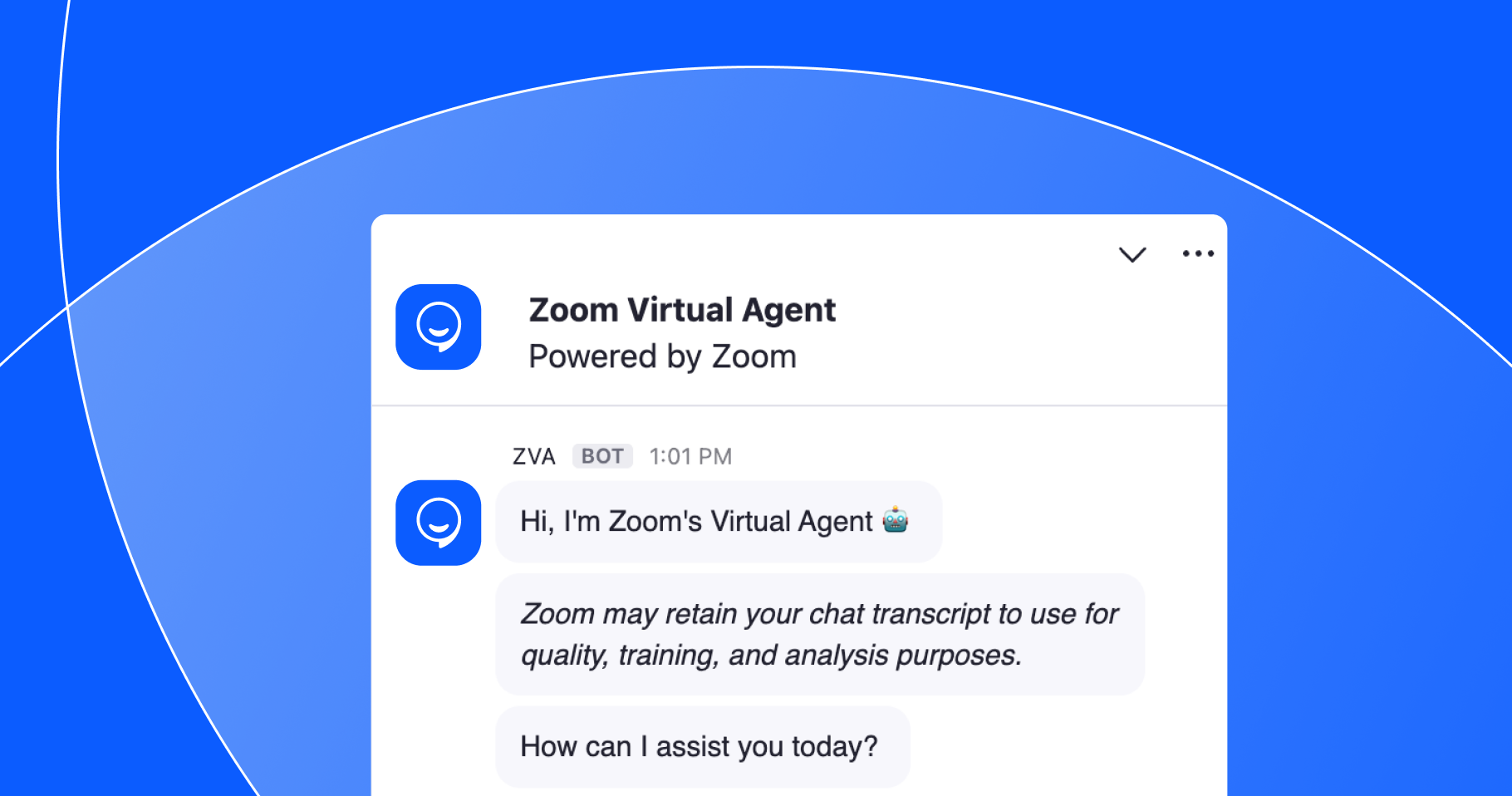
Zoom on Zoom: How we’re reinventing customer experience from the inside out
We use our own Zoom AI chatbot and experience a 97% self-service rate and approximately $20 million in cost savings each month. Find out how.
Updated on August 03, 2023
Published on August 03, 2023


Leaders of the most successful businesses know that providing the best customer experience (CX) in their markets leads to greater customer loyalty and revenues. However, they also recognize that the costs of not achieving customer experience maturity can be significant.
A Morning Consult study found that more than half of respondents would switch to a competitor after one or two bad customer experiences, making it imperative for businesses to focus on positive CX. Having a customer experience maturity model can provide insights to help you keep your business on track with customer satisfaction and business success.
Here’s everything you need to know about how to create a customer experience maturity model.
Customer experience maturity is a framework that allows you to understand how well you meet your customers’ CX expectations. The CX maturity model takes the guesswork out of assessing your business's customer experiences, showing you areas where it excels. The model will also reveal areas where your CX strategy is missing the mark and provides information that can help you improve them.
Customer experience matters too much for you to leave it up to chance. The best strategy is to name a chief experience officer (CXO) or CX leader to take responsibility and execute your customer experience management program.
Your CX leader will also work with change management to ensure your team integrates new initiatives into their processes and workflows. Additionally, your CX leader will ensure employees understand the importance of their roles in enhancing customer experience.
To accomplish those CX goals, your CX leader can use the customer experience maturity model to understand where your organization is now, how to prioritize initiatives to make the biggest impact, and monitor performance over time.
The CX maturity model is a valuable tool for customer experience professionals leading the charge to improve customer experience, customer loyalty, and customer lifetime value (CLTV).
The model encompasses five areas of action necessary for becoming a customer-centric organization and allows the business to score performance from “excellent” to “room for improvement” or “needs immediate action.”
Here’s what to focus on.
Before creating the CX customers want, you need to know what they want. Intuition and anecdotal information only go so far when determining what the ideal customer journey looks like. Data-based decisions will result in better outcomes.
Numerous data sources are available to your customer experience management team. However, listening to the customer and considering that information as you update your CX strategy is vital.
You can collect and analyze operational data, scrape data from the web or social media, and analyze emails or interactions with your chatbot, which can reveal your customers’ behaviors and preferences.
A highly effective way to determine what your customers want is to ask them. Short surveys that collect customer feedback can provide key insights about the CX your business offers and help you better understand consumer expectations.
After you’ve used data insights to develop a clearer picture of what your customers prefer, the next step is to design customer experiences that will delight them. You need to formally document and create customer experiences to minimize inconsistencies. The best customer experience design goes beyond linear customer journeys to consider all touchpoints at which customers can interact through a holistic approach.
Building a team from product development, sales, customer service, development, and leadership will help you ensure that your CX program includes all perspectives. A team representing all departments will also ensure that the customer experience you envision is true to your brand and business goals.
An example of an enterprise makes its vision a reality
Disney is a great example of an organization that successfully visualizes and executes its CX strategy. The Disney Institute site is full of industry-leading content regarding customer experience that may be able to inspire you as you build yours.
Once you have mapped out the customer experience that will help you build a base of satisfied customers, it’s time to execute your CX program. Training employees is vital, particularly if your CX strategy varies from the way you’ve operated in the past.
Optimizing customer experience may require substantial changes to your business culture and day-to-day processes. Ensure your employees are well-acquainted with your plan to enhance CX.
The 2020s decade will mark the turning point when consumers became overwhelmingly digital-first. While your employees will always be integral to providing great customer experiences, your customers will expect you to provide self-service and other digital engagement options.
For us at Zoom with our own AI chatbot in place, we’ve experienced a 93% self-service rate — that is, 93 out of 100 customer conversations with our intelligent chatbot are resolved successfully without needing to involve a live agent.

Use the data you collected before you created or optimized your CX program as a baseline, and then use it to benchmark your customer service metrics and measure how your new CX strategy impacts customer satisfaction and loyalty. In the digital age, you can request feedback or collect data on multiple channels, giving you greater visibility into whether your new CX strategy is working.
Collecting and analyzing data and monitoring key performance indicators (KPIs) is an excellent way to measure customer satisfaction and track it as you make changes. Tracking your business’s CSAT score is a simple yet effective way to survey customers and gauge their happiness.
Ask straightforward questions on elements of your CX, such as “How do you rate your experience with customer service?” Then, ask customers to rate them on a five-point scale and use the percentage of people who responded 4 or 5 to determine your CSAT score.
Insights from your CSAT will show where you need to focus your resources in order to learn what makes great customer service.

Your CX governance plan may look good on paper. However, if your company culture doesn’t align with it, customer experience will suffer. Company culture stems from your business’s core values, and numerous factors influence it, from whom you hire, your management style, and policies and processes.
As you update your customer experience maturity model matrix, assess your company culture's impact on CX and flag areas that need your attention.
Sharing positive feedback is a simple change you can add to day-to-day workflows that can improve company culture while keeping CX top of mind. Sharing a note from a customer expressing how happy they are with the products and services your business provides or how thankful they are for an employee who went above and beyond (or knows how to deescalate an angry customer) can boost morale.
Unless employees work in customer service, they may never hear this type of feedback. Sharing it can help everyone in your organization see their role in customer satisfaction and the business’s success and motivate them to inspire a steady stream of positive feedback.
After you’ve filled in the customer experience maturity model framework and scored each segment, you’ll have a roadmap for improving the CX your business offers.
This customer experience maturity assessment will help you focus your time and resources on areas that need it most — and can result in the greatest ROI in terms of customer satisfaction, customer loyalty, and business success.
Remember, with each change you make to your company’s policies and processes, it’s pivotal to have buy-in at every level of your organization to ensure a coordinated effort that leads to consistently excellent customer experiences; however your customers choose to engage.
Creating a customer experience maturity model for your business isn’t a one-time exercise. It’s designed to point out strengths and weaknesses and help you progress toward excellent customer experiences that will position you more competitively and help inspire customer loyalty, which equals increased revenue and success.
However, entering information and analyzing performance in the model’s five areas — data, design, delivery, measurement, and culture — takes time.
Zoom can help. Zoom Virtual Agent, our intelligent conversational AI and chatbot solution, leverages natural language processing (NLP) to understand customers and detect their sentiments. That’s data you can use to benchmark customer satisfaction today and monitor progress as you make changes to your customer experience program — and Zoom Virtual Agent automates data collection and analysis. Contact us to learn more about how to keep a close watch on customer satisfaction and use the customer experience maturity model more efficiently.